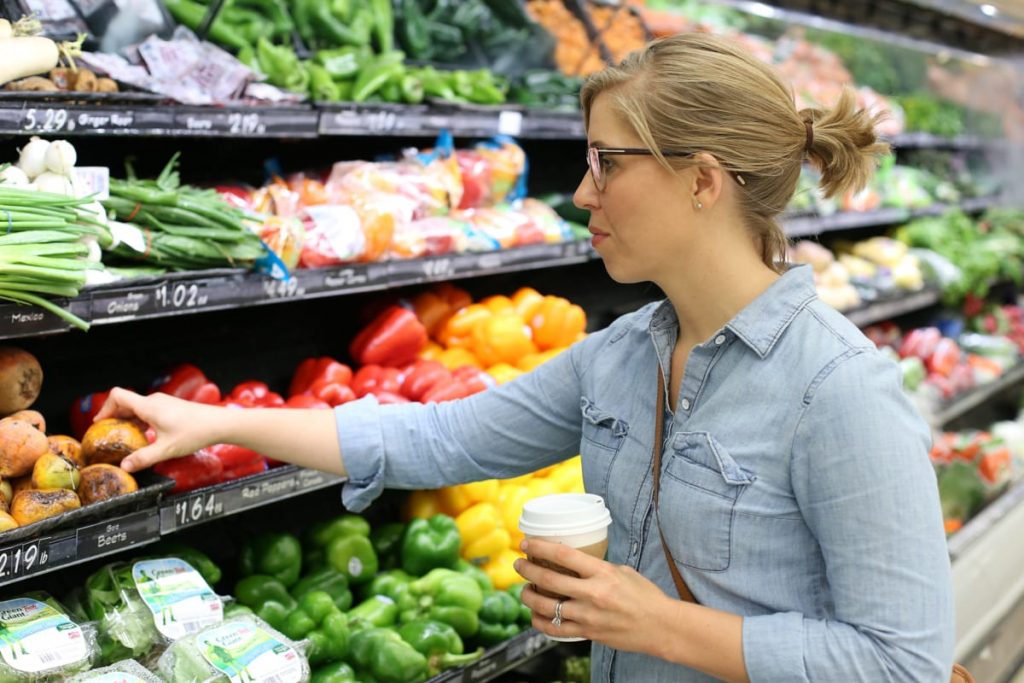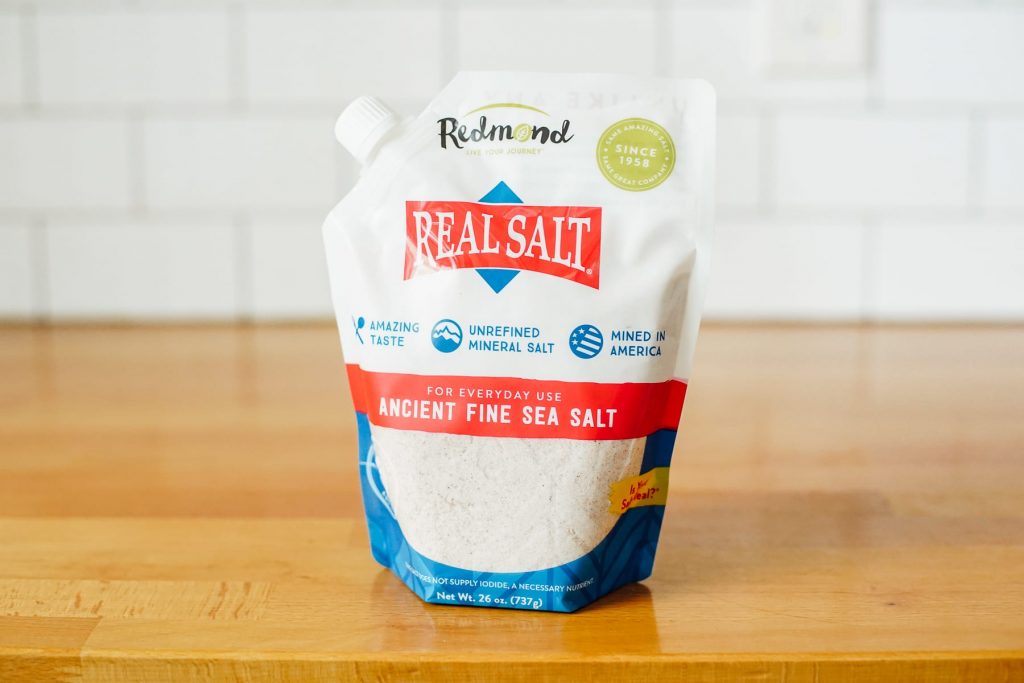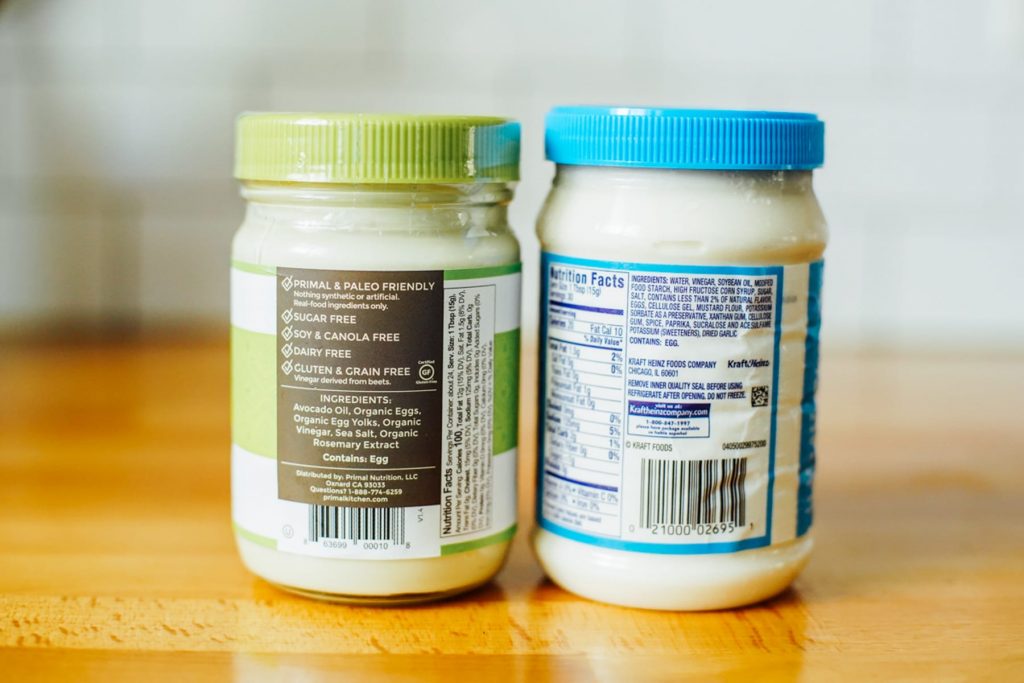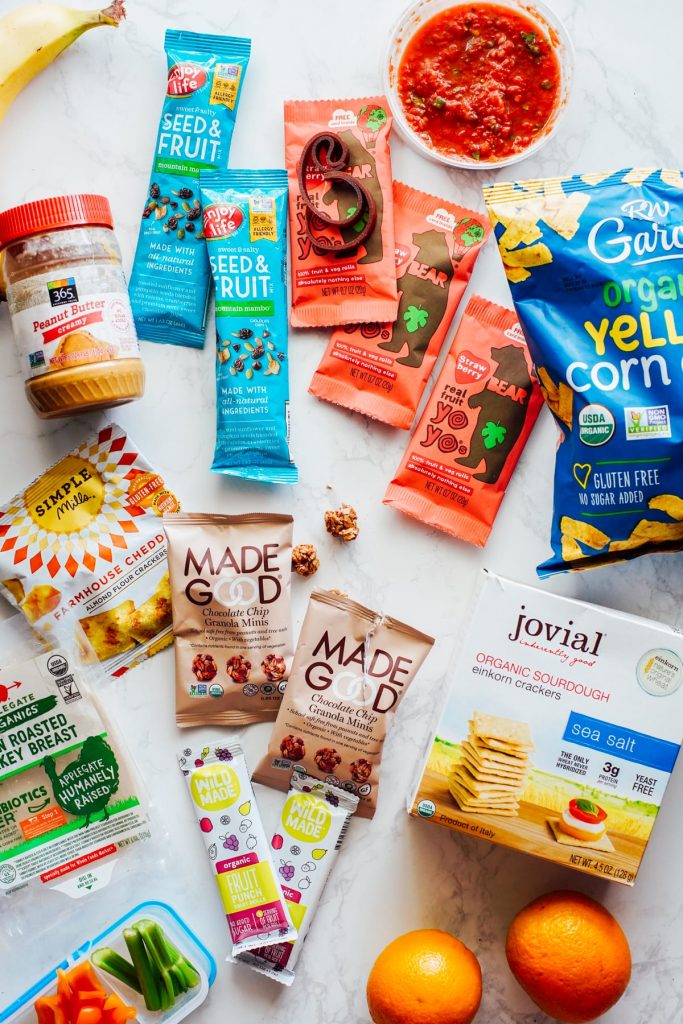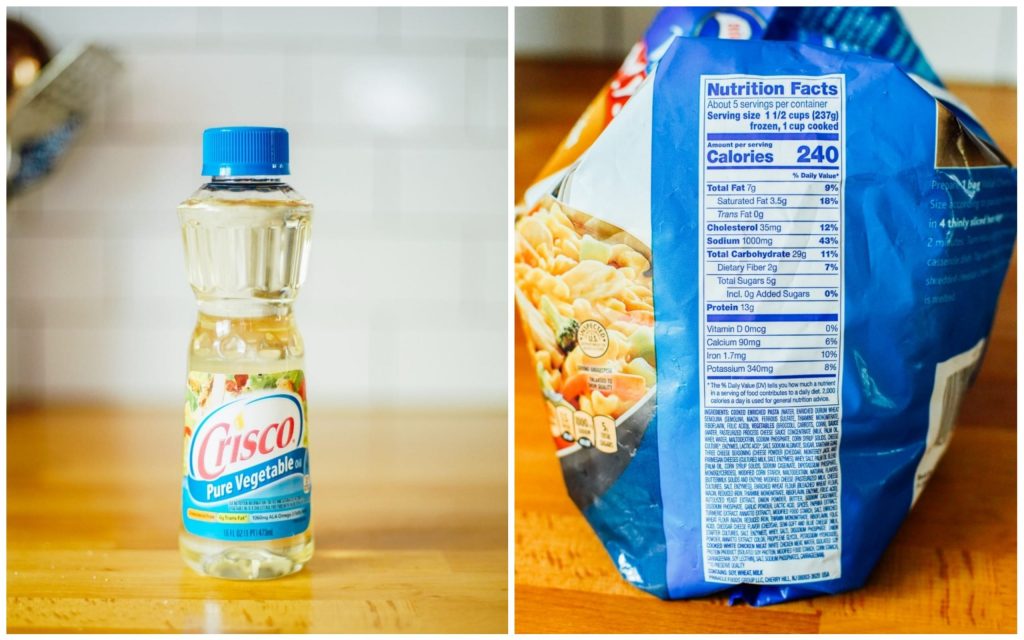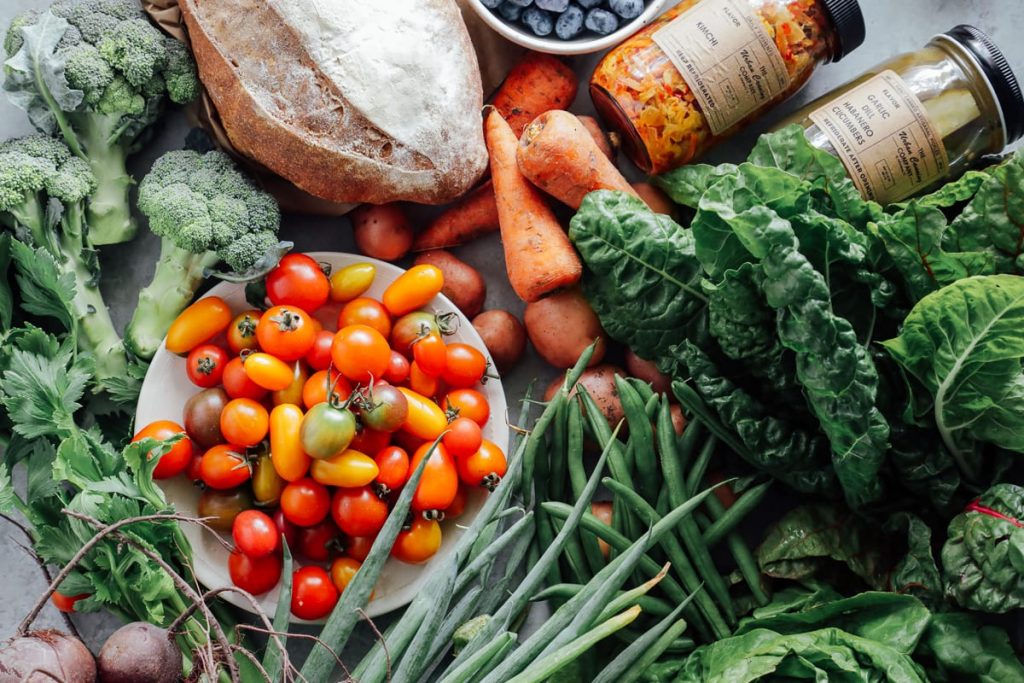Figuring out what’s healthy and what’s not in today’s culture is not easy or straight-forward. Everyone has an opinion about how to eat and what to eat. This is why I believe so strongly in getting back to something called real food. Today, we’re going to dive deeper into the topic of real food and talk about how to read ingredient lists and find real food in the grocery store.
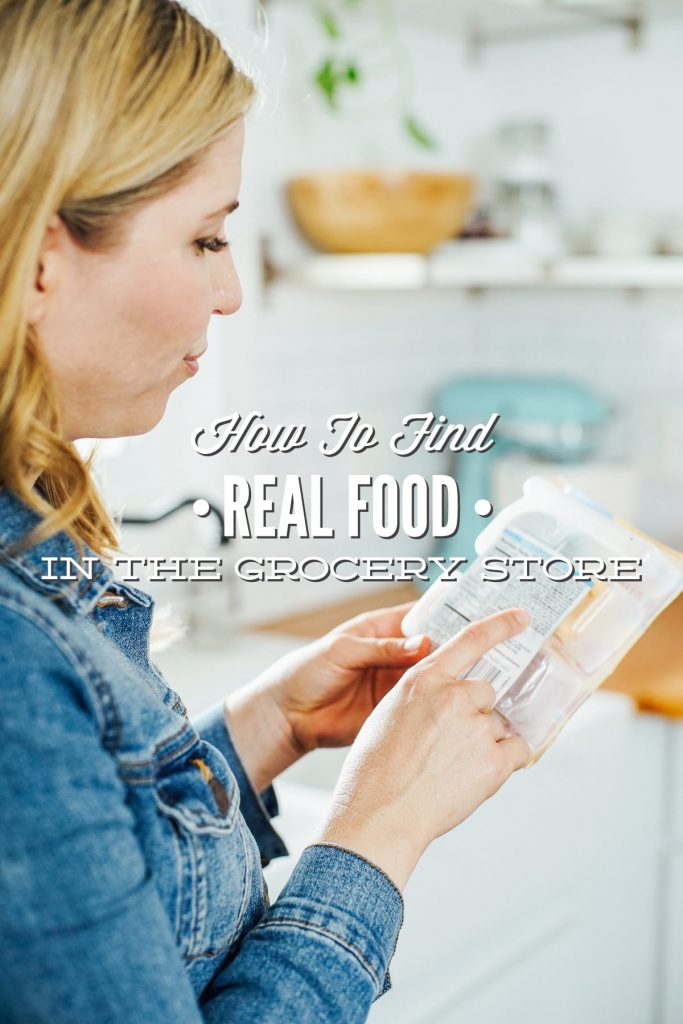
Want to Save This Article?
Enter your email & I’ll send it straight to your inbox. And you’ll get new recipes & tips each week.
In the past 80 years, our food system has gone through a change like never before. Granted, many changes are amazing. I love my electric oven and fridge. As Michael Pollan says in Cooked, “Industrialization isn’t bad. But when we cut corners and forget why we did something for so long, we end up hurting ourselves.”
For thousands of years, healthy people have prepared foods in certain ways and for certain reasons. Over the past 80 years, we’ve cut big corners and listened to advertisers and lobbyists (versus tradition) tell us what to eat and how to eat. As a result, we’re now confused about food and incredibly sick. Real food ends all the confusion over what we should eat.
Finding real food is easy to do when it comes to picking out produce and even buying meat and eggs (grass-fed and pastured meat, eggs, and dairy are the best option, and if you can find a local source, even better), but what about packaged food?
Maybe you’ve heard the saying, “shop the outer aisles of the grocery store, avoid the inner aisles.” While I certainly agree that the bulk of our food should be centered around this idea, it’s important for us to recognize that the “inner aisles” aren’t evil.
Real food may be found in the inner aisles: grains, pasta, oils, vinegars, tuna, canned tomatoes and olives, salt, beans, dried herbs. All of these foods are real ingredients that may be used to make healthy, nourishing meals.
Then there are those foods that feel more questionable and confusing to navigate: crackers, tortillas, bread, condiments, etc.
Learning how to use ingredients to cook nourishing meals is the very heart of getting back to real food, but this doesn’t mean that you have to do it all or make it all!
For most of us, spending the majority of our time in the kitchen just isn’t possible. For our ancestors, this was more doable, as agriculture was the way people lived, it was life. Today, we have to balance eating real food (which involves sourcing and cooking) and living in the modern world. Purchasing some pre-made foods, like tortillas or mayonnaise, is convenient and makes real food more approachable.
Today, more companies are stepping up to meet the demand for real-food convenience. It’s important to know how to weed through the ultra-processed “food” and find these real-food options.
The Number One Rule For Finding Real Food
When purchasing something in a box, package, or can, look past the marketing hype and health claims and read the ingredient list! This is the only way to know what's actually used to make that food (the ingredients) and to make an informed choice about your purchase.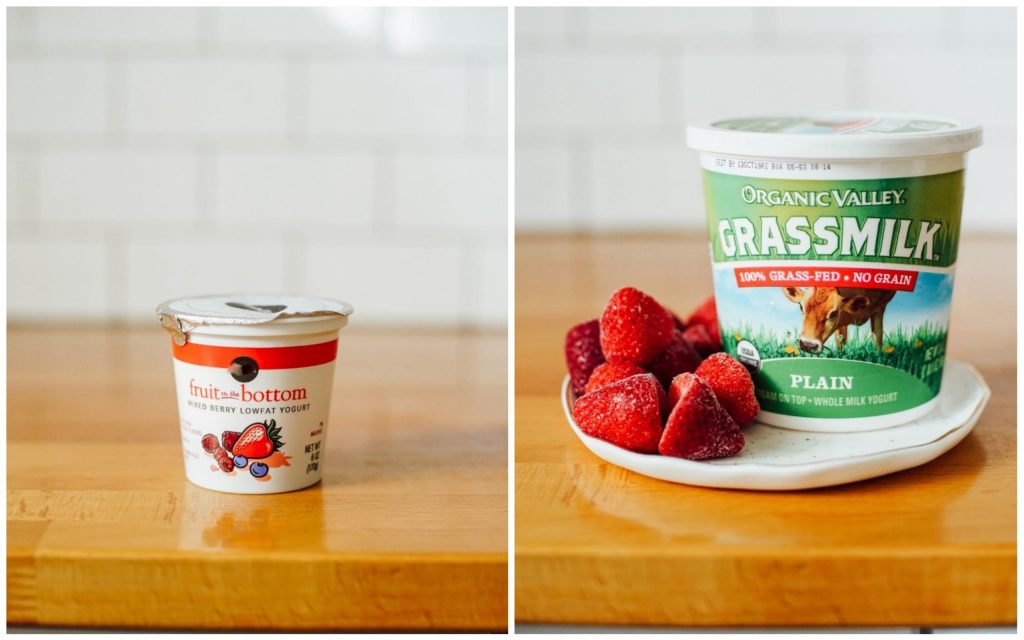
How to Find Real Food and Avoid Ultra-Processed Food in the Grocery Store
Companies spend billions every year on marketing food products. Companies certainly don’t make it easy to navigate through all the food choices in the grocery store. In fact, they make it harder than ever to tell what’s actually made with nourishing ingredients and what’s full of rancid and hydrogenated oils and fats, loads of sugar, flavor enhancers, artificial and “natural” flavorings, synthetic preservatives, and artificial dyes.
So, how can we see through all the marketing and know what’s actually healthy and real?
The key is to ignore the marketing labels on the front of the package (i.e. natural, vegan, heart healthy, made with fiber, made with ancient grains, gluten-free, made with real fruit, etc.) and find the ingredient list, then read it. That’s the only way to find out what’s actually inside that food (whether it’s actually food or a nutrient-less substance).
How to Read Ingredient Lists
Let’s pretend you’re in the grocery store and you’re looking for syrup (for pancakes and baking). You want to purchase maple syrup, because you know maple syrup is a real food.
Within a few minutes of shopping, you get to the baking aisle where the syrup options are stocked. As you look through the selections, you notice a few options: pancake syrup, table syrup, and maple syrup. Each one features marketing messages and various labels on the front of the bottle.
- The pancake syrup (original syrup) proclaims: 210 calories per serving, no high fructose corn syrup.
- The table syrup attracts your eye with the message: all natural, delicious authentic taste, and a NON-GMO VERIFIED label.
- The maple syrup bottle seems like a good option since the package reads: 100% maple syrup, organic, and has the USDA ORGANIC label.
Which one should you choose?
Remember the key is to ignore all the marketing and labels (organic and non-GMO can be helpful, but they aren’t nearly as important as what’s actually in that food) and find the ingredient list, then read it! Let’s do that…
- The pancake syrup (original syrup) ingredient list: corn syrup, water, sugar. Contains 2% or less of: salt, natural and artificial flavors, sodium hexametaphosphate, preservatives (sodium benzoate, sorbic acid), caramel color, phosphoric acid
- The table syrup ingredient list: brown rice syrup, water, cane sugar, brown sugar, natural flavors, citric acid
- The maple syrup ingredient list: maple syrup
As you look at the ingredient list, ask yourself four questions. These questions will help you determine which option is made with real ingredients.
Question 1: Are the ingredients real foods? Get to know what real food looks like. This post is a great place to start.
Question 2: Could I purchase the ingredients from the store and make this food at home? The answer will help you determine if the food in question is made with real ingredients. Have you ever been able to purchase “natural flavor” from the store?
Question 3: Are the ingredients necessary? This is one reason why learning to cook is important. When you know how to make salad dressing, you know that many of the extra fillers (like natural flavor or maltodextrin) are not necessary. The same goes for yogurt, bread, granola bars, mayo, etc.
Question 4: Are the ingredients as nutrient-dense as possible (for a packaged food option)? If you’re looking for something that you’ll be enjoying for lunch (or maybe something you’ll add to your child’s lunchbox, like crackers or fruit leather) or serve with breakfast (granola or yogurt) or dinner (tortillas), finding a nourishing option is important.
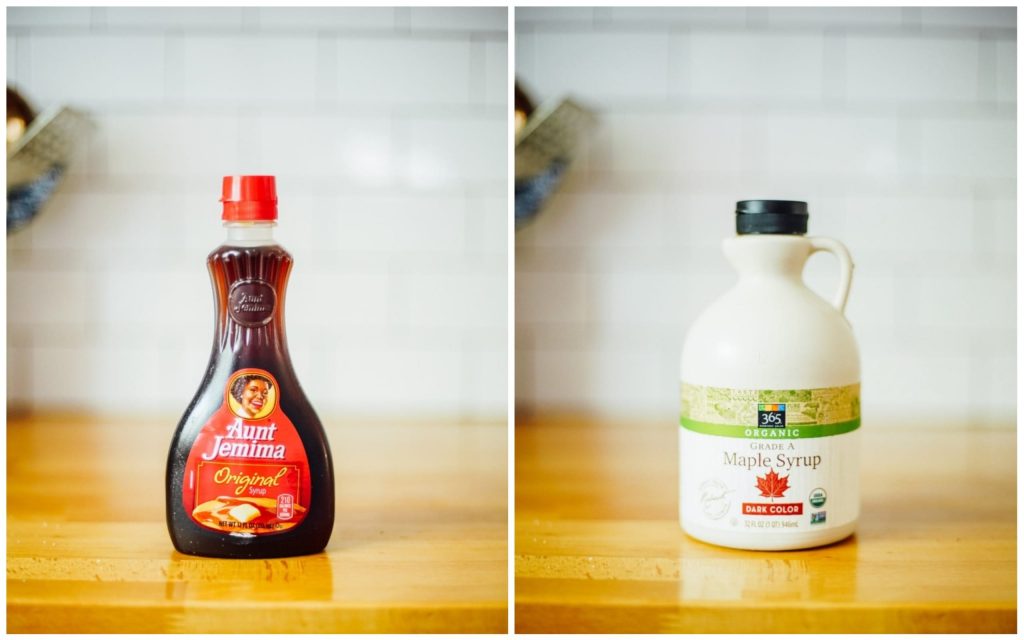
Reading the ingredient list and asking yourself the four questions is the easiest and best way to find real food in a sea of ultra-processed food options. This is the best way to make informed choices as a consumer and to avoid being tricked by marketing terms that appeal to your desire to eat healthy, real food.
Ingredients to Avoid or Minimize
Along with ingredients that are clearly unrecognizable, there are some ingredients that I avoid or, at least, minimize. Many of the ingredients are standard in ultra-processed “food.”
1. Vegetable oil, soybean oil, canola oil, and safflower or sunflower oil. Sunflower oil is hard to avoid in some more real-food based products, so I do the best to minimize this. This article from Dr. Mark Hyman is a good one about why we should avoid (or minimize) consuming vegetable oils.
2. Artificial food dyes. This podcast episode is a good one about artificial food dyes and their effect on mood and behavior, particularly in children.
3. Sugar as the first or second ingredient in a food that’s being served regularly (not a treat). Ingredients are listed in predominant order. This means a food with sugar as the first or second ingredient is super HIGH is sugar. This is not a nourishing option for daily enjoyment.
4. Ingredients only available to food scientists. Examples include maltol or “natural flavor.” Have you ever found maltol (a flavor enhancer added to some foods like pickles) or the elusive and very broad “natural flavor” in the grocery store, nature, or a farmer’s market? Yea, me either.
5. Natural flavors. There’s no way to know what a natural flavor is made from or what it is unless the company discloses.
6. Artificial flavors. Artificial flavors also aren’t disclosed and come from non-food sources. There’s no way of knowing what those non-food sources are unless the company discloses.
7. Added vitamins (fortified). Synthetic vitamins are added to “food” because that food has been stripped of its natural vitamins (due to the overly-processed state of the ingredients). Synthetic vitamins, which must be added back to the food to make it sellable, are hard to digest and not the kind of vitamin a food that isn’t ultra-processed would naturally contain (i.e. a pear versus a pear-flavored granola bar).
While consuming these ingredients every so often may not be harmful, the majority of Americans aren’t “occasionally” consuming these ingredients and foods. The majority of Americans are consuming these ingredients in excess: for breakfast, lunch, dinner, and snacks 7 days a week.
The additives used to make many ultra-processed “foods” may currently be deemed as safe, but is a diet compromised almost entirely of these “foods” (and the ingredients used to make these foods), healthy or safe? I personally don’t think so. Just how much sodium hexametaphosphate and other additives and preservatives (like sodium benozate) are people consuming on a daily basis and what’s the effect on the body?
Most of these ultra-processed “foods” are void of nutrients the body needs. Is it any wonder that we’re seeing the health issues of today?
I believe our bodies are literally crying out for nutrients and the very energy needed to perform basic, healthy functions. This is why it’s so important for us to be informed consumers, research companies and the packaged food products we choose to buy, learn how to cook at home using real ingredients, and serve this food at home.

